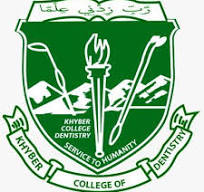ASSESSMENT OF EMPATHY AMONG POSTGRADUATE TRAINEES DOCTORS IN PUBLIC TERTIARY CARE HOSPITALS PESHAWAR, PAKISTAN: A CROSS SECTIONAL STUDY
DOI:
https://doi.org/10.33279/jkcd.v12i03.37Keywords:
Empathy, Jeff erson scale, Postgraduate trainees.Abstract
Objectives: This study's objectives were to evaluate a cohort of medical students who had completed four years of undergraduate training and to fi nd parameters related to clinical empathy.
Methods and materials: This cross-sectional study was conducted from January 2021 to august 2021 among postgraduate trainees in public tertiary care hospitals in Peshawar, Pakistan. The objective of the study is to measure the level of empathy among post-graduate doctors working in different tertiary care hospitals in Peshawar Pakistan. For measurement of the level of empathy,
The Jeff erson Scale of Empathy (JSE) was used as a tool. Sociodemographic data and Students' levels of empathy were assessed by using the Jeff erson Empathy scale (JES). IBM SPSS 22 was used for data analysis. The (JES) scores on average were calculated. An independent sample t-test and one-way ANOVA, which were signifi cant at a p-value of 0.05, were used to assess the relationship between the mean Jeff erson empathy score and socio-demographic characteristics.
Results: The P value of the ANOVA test across diff erent years of postgraduate study was significant, but it was less than.001, thus it was not utilized to compare empathy scores between hospitals in KTH, LRH, and HMC. The P value for the ANOVA comparing several hospitals was 0.635, which did not indicate signifi cance. Age and empathy had a Pearson correlation of -.085 (r=-.085). Empathy ratings and monthly income had an r=-.285 association. According to the results of multiple linear regression, a rise in age by one unit would increase empathy scores by 0.437 times.
Conclusion: Our research revealed that the level of empathy varied depending on the training year and that after the second year, age ceased to be a factor in predicting empathy.
Downloads
Published
How to Cite
Issue
Section
License
Copyright (c) 2022 Jawad Hussain, Ayaz Ayub, Ihsan Ullah, Zia Ul Haq

This work is licensed under a Creative Commons Attribution-NonCommercial-NoDerivatives 4.0 International License.
You are free to:
- Share — copy and redistribute the material in any medium or format
- Adapt — remix, transform, and build upon the material
- The licensor cannot revoke these freedoms as long as you follow the license terms.
Under the following terms:
- Attribution — You must give appropriate credit , provide a link to the license, and indicate if changes were made . You may do so in any reasonable manner, but not in any way that suggests the licensor endorses you or your use.
- NonCommercial — You may not use the material for commercial purposes .
- No additional restrictions — You may not apply legal terms or technological measures that legally restrict others from doing anything the license permits.










